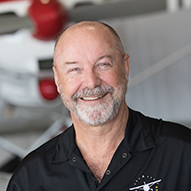There was a time when all it took to open a flight school was access to an airplane and a pilot with a lot of chutzpah. Later the requirements were upgraded a bit to include certification of both the airplane and the instructor. Today, the Transportation Security Administration (TSA) has added a whole new set of rules for us to consider and comply with. But before you hang your head and bemoan the march of time and federal intervention, consider this—the TSA requirements are neither mysterious nor difficult to comply with. Their representatives are pretty decent people, too.
The intent of the TSA, which is a branch of the U.S. Department of Homeland Security, is simple. It is essentially this—let’s all work together to make sure we know how to manage aircraft operations safely on the ground and in the air.
For employees the standard is fairly simple. Have them complete an initial security training program, and be sure you keep a record of it. Each year on the anniversary of that initial security training, be sure they undergo recurrent training. You will want to keep a record of that, too. Maintain those records on current employees, and keep records on former employees for at least a year after they have moved on from your school.
Keep in mind, the regulation that covers training is not for flight instructors alone. It extends to any employee who has direct contact with flight students—whether they are American citizens or foreign nationals. If your employee interacts with your flight students in any way, the employee needs to complete initial security training and then complete recurrent training on an annual basis.
Back in the old days you could fly with any Tom, Ricardo, or Henri who showed at your front counter. That’s not the case today. The TSA separates students into two broad groups—American citizens and foreign nationals. The requirements for flying with each group are different. Fortunately, the basics of staying on the sunny side of the regulatory process are actually fairly simple. It is important you understand the rules, however, and that you maintain good records in your files.
American citizens are required to present a birth certificate or a U.S. passport to establish citizenship before any flight training can take place. You should make a copy of either document, as well as a photo ID to accompany a birth certificate, to keep in your files. These copies can be electronic or hard copies.
Foreign students have a different path to follow, and that path leads straight to the TSA’s Alien Flight Student Program. The student will have to initiate the process with the AFSP; however, he or she is not entirely solo on this journey. Your staff can provide guidance to prospective students, and the TSA maintains a help desk that can be accessed by phone or email to help get applicants over the rough spots.
There are exceptions to the AFSP requirement, of course. If your student is a foreign national who is coming to town to do recurrent training, such as an instrument proficiency check, or a flight review, the student does not have to obtain TSA approval to commence training.
AOPA maintains a series of Web pages that feature clear presentations of the rules and outstanding links to an assortment of resources that can help you—including an online course that your employees can use to obtain their initial and recurrent security training. You can find it all here.
Jamie Beckett is the SunState Aviation’s vice president of operations in Winter Haven, Florida.



